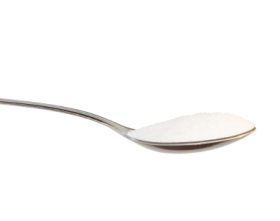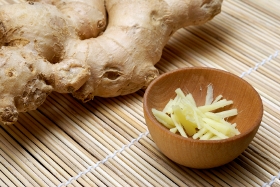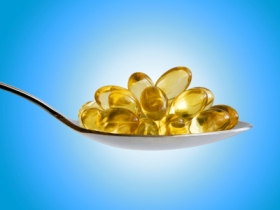Leukemia Drug Kills 4 Times More Patients Than No Medication At All

A decade old drug for leukemia, Mylotarg, has been proven to cause more deaths than no leukemia treatments at all.
Pharmaceutical giant Pfizer is finally removing a leukemia drug in the market, Mylotarg, after studies showed that the drug actually caused four times more mortalities than having no treatment at all.
In addition to a higher mortality rate for patients who trusted Mylotarg, it was also found that the drug produced very little or no benefits when used as a treatment.
Deadly ‚Äúfast-tracking‚ÄĚ
This unfortunate series of events can be traced perhaps to how the drug Mylotarg was approved in the first place. A decade ago, Pfizer approached the US Food and Drug Authority with the new drug for leukemia. The FDA was then implementing a new abbreviated or ‚Äúfast-track‚ÄĚ process of approving new drugs.
Mylotarg was one of the drugs that were approved using this abbreviated approval process, which did not require extensive clinical trials. With a clinical trial that involved only 140+ patients and little other proof of effectiveness, Pfizer was given the go signal to release the drug in the international market; indeed, with dire consequences.
The dire statistics are all we need to see why Mylotarg was finally pulled from the market: 5.7% of all Mylotarg patients died after undergoing treatment. Leukemia patients who did not receive Mylotarg or any other treatment have a mortality rate of 1.4%.
Alongside the withdrawal of Mylotarg from the international market, Pfizer has also withdrawn support for an experimental new drug for osteoarthritis called Tanezumab. Tanezumab was supposed to be prescribed for pain caused by osteoarthritis. Shockingly, Tanezubam actually caused more problems for people who had osteoarthritis.
The use of the experimental drug in clinical trials led to full joint replacement procedures and worsening osteoarthritic conditions. Tanezubam was due for the final stage of testing before FDA approval. An estimated annual revenue of $100 million was expected if the drug was approved (good thing it wasn’t approved!).
What is leukemia?
Leukemia is a devastating form of cancer that target blood-producing tissues in the body, including the marrow and even the lymph nodes (collectively, the lymphatic system). There are several types of leukemia; both children and adults can suffer from the disease.
The problem usually starts when the bone marrow begins producing abnormal white blood cells – more than what the body can handle.
The body has its own system of dealing with malignant and abnormal cells. When cancer occurs, this internal system is defeated. Cells that normally commit cellular suicide become ‚Äėimmortal cells‚Äô and ‚Äėforget‚Äô to die naturally, as they should to keep the balance in the body.
Some of the general symptoms of leukemia include:
- Tenderness or pain present in the bones
- Night sweats
- Petechiae or abnormal red spotting of the skin
- Person easy bleeds or easily bruises
- Lymph nodes become swollen
- Uncontrollable weight loss
- Frequently bodily infections
- Fatigue
- Bodily weakness
- Fevers
- Chills
Handling leukemia naturally
The body can be strengthened to fight off this type of cancer naturally:
1. Traditional Ayurvedic medicine recommends a diet of fruit, green salads and vegetables to combat infection in the body and to help purify the body of toxins (this is actually backed by medical science; fruits and vegetables are full of fiber, vitamins, minerals and fiber that all come together to fight off infection and restore balance in the body).
2. Leukemia patients should stay away from stressful situations. Relaxation techniques like yoga and meditation are recommended for natural strengthening of the immune and lymphatic system.
3. Leukemia patients often suffer from a type of anemia; in such cases, B-complex and iron supplements are recommended to help the body restore the iron content of red blood cells.
4. Folic acid deficiency can result from conventional treatments for leukemia, so folic acid supplementation is also important if the patient is already undergoing chemotherapy or other conventional cancer treatments.
5. During the onset of the disease and treatment, leukemia patients are often prone to infections (primarily because leukemia attacks white blood cells, the body’s natural defense).
High doses of vitamin C can help strengthen the body’s immune function. It is also an effective antioxidant, which reduces cellular damage from free radicals. Vitamin E can also be taken as a protective measure against the side effects of treatment.
6. Chlorella supplementation may be explored to increase the production of healthy blood cells. In addition to increasing healthy blood cell production, chlorella also fights off the growth of cancerous cells in the body, which is very important when a person is fighting off leukemia.
7. Garlic can help fight off infections and can also protect the body from further ravages of cancerous cells. Since leukemia patients have sensitive digestive tracts, garlic supplementation may be explored. Don’t forget to consult with your healthcare provider before trying this.
8. According to the A.P. John Institute for Cancer Research, the following can help control the growth of cancerous blood cells and manipulate the cancer-forming process: vitamin B6, parsely, vitamin D, extract of green tea, why protein, grits, calcium D-glucurate, D-limonene (can be sourced from citrus fruits), niacin, choline, selenium, perilla oil, super miraforte, resveratrol, indole-3 carbinol, melatonin, pantothenic acid, licorice root.
Sources:
articles.mercola.com
herbs2000.com
mayoclinic.com
ayurvedic-medicines.com
apjohncancerinstitute.org
Posted: July 12th, 2010 under Cancer, Prescription Drugs.
Tags: leukemia, leukemia supplementation, leukemia treatment, Mylotarg, symptoms of leukemia
Comments: none

















